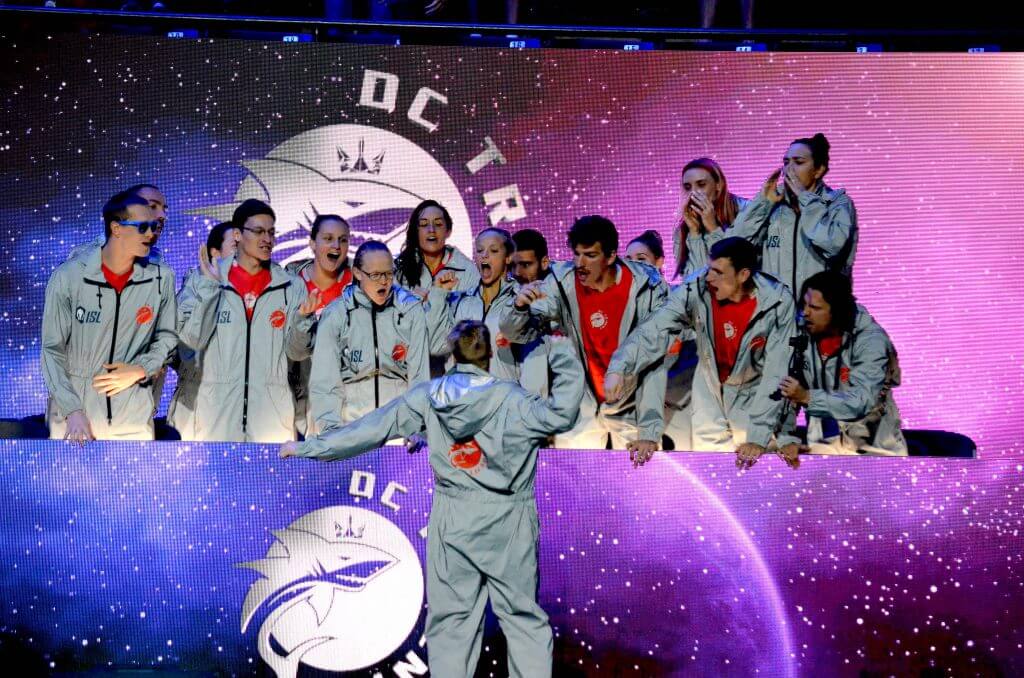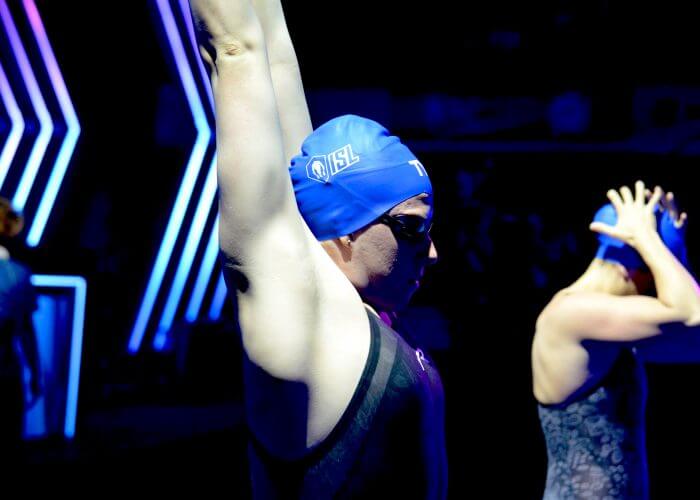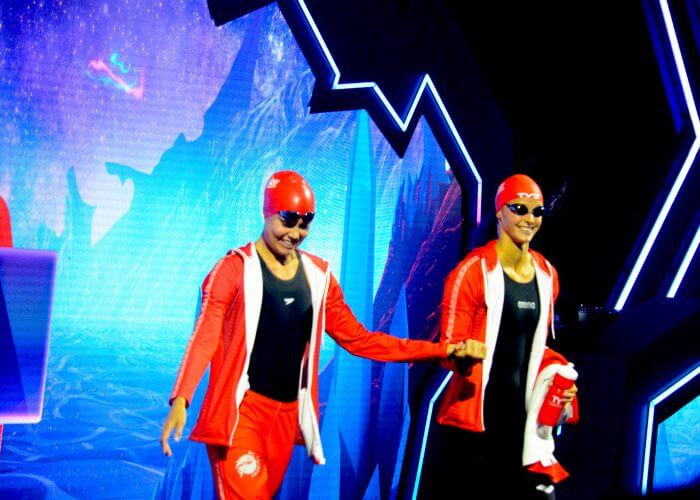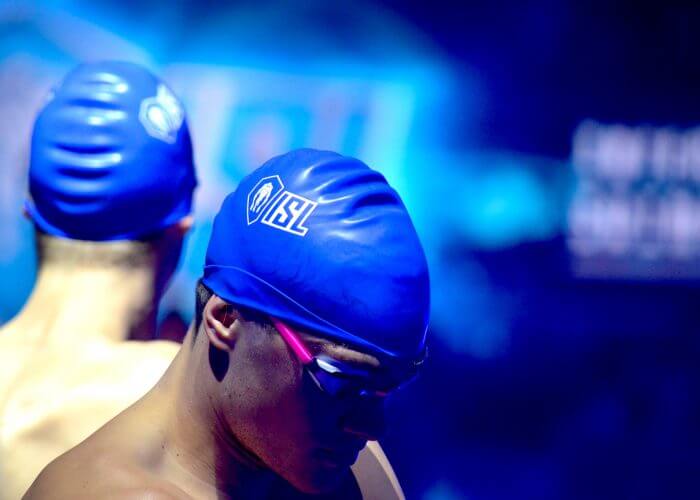International Swimming League Debut — an Atmospheric Look

With the first day of the International Swimming League in the books, there is plenty to reflect on — in the water and out.
The atmosphere was unlike any swim meet in the past, with light and sound as much on display as the swimmers.
The races had the feel of an NBA All-Star game as the live DJ blared energetic music the second each race hit the water and kept the crowd feeling the music between races.
The athletes were feeling the energy as well and put forth some strong swimming in the water as teammates cheered them on.
Here is what made it unique:

Lilly King at the International Swimming League debut. Photo Courtesy: Dan D’Addona
From the box
Each team had a team box to sit in when they were not racing. The four boxes had digital screens on the front and in the back, behind the swimmers with their logos shining during the races.
It had the feel of having box seats at a baseball game or even watching a friend in a symphony or an opera. Every athlete when asked about the boxes were pleased at how the team atmosphere flowed through them.
And it did … for the most part.
Early in the meet, many of the team boxes were near empty as swimmers were warming up for their events mid- or late-meet — meaning no teammates were cheering on their racers— but in the final session they were full again, giving the final few events extra energy.
Which is the fast lane?
One of the more interesting aspects of the series is the lane assignments. Each team gets two designated lanes per race, and they are next to each other. It will change at every meet.
So, for instance, the Cali Condors had lanes 1 and 2 the entire day and in later meets will be in the middle of the pool.
But since they are adjoining, the two teammates for each race are announced, and come out together, heightening the team vibe on deck. It also means that when the swimmers hit the wall for the finish, they are always next to a teammate, which will bring out better reactions and more excitement.
They warmed up in those same lanes, together, starting and ending on team notes.

Natalie Coughlin entering at the International Swimming League debut. Photo Courtesy: Dan D’Addona
Techno joy
The lights were bright at all times, and not just the spotlights. The backdrop behind the blocks was a bright screen in the shape of an iceberg and never went dark.
In front of the iceberg was a live DJ, who was working the entire meet, only stopping when the races were being announced and when the swimmers were on the blocks waiting for the start. The energetic music continued once the athletes hit the water for the race.
Katie Ledecky said the music wasn’t really heard under water, but it just sounded like a louder announcer.
The fans were very responsive and the half of the stands that was full was more energetic than at many swim meets.
Techno not-so-joy
Like any first-time events, there were some things that needed fine-tuning.
Live results were not available by any timing site or results site, making it difficult for anyone to follow the action not watching the live stream.
Media access was restricted to the non-crowd side of the natatorium, however there were no electrical outlets or strong Wi-Fi connections. Initially, only specific photographers were allowed on the pool deck, but that was remedied quickly.
ISL officials acknowledged all the kinks had not been worked out and worked to resolve what they could in the short time before the first session.

John Shebat at the International Swimming League debut. Photo Courtesy: Dan D’Addona





Find it all very confusing???
The TV production of the actual races was absolutely terrible. There were no splits at all during the races. The only information we got was who was in the lead. You had no idea if swimmers were gaining or losing time during the races (hell, you didn’t even know if they were losing or gaining positions, as apparently that’s not something that could be of any interest to the viewers).
Just to make things worse the producer came up with the idea to switch to a closeup of the winner as soon as he/she finished, so you had no clue who finished second, third and so on. This is a team competition, so getting a fourth place instead of a fifth could potentially be more important than who wins the race. Apparently that’s something the producer had no understanding of whatsoever.
This producer actually managed to break things that have worked for as long as swimming have been shown on TV. How are they gonna attract new viewers to the sport when they can’t even get the most basic things right?
Patrik, you’re quire right… but look at the timeline of events for clues: rights were confirmed between 2 weeks and 1 day out from live … there is no way in hell that any broadcaster can work on that kind of timeline to come up with honed production … planning of such things takes months and months and months… more observations coming up.